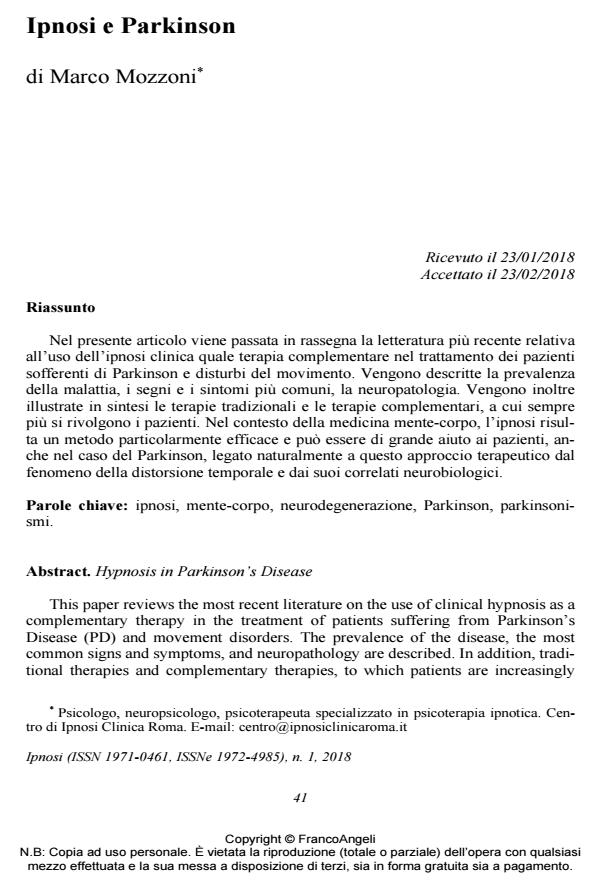Hypnosis in Parkinson’s Disease
Journal title IPNOSI
Author/s Marco Mozzoni
Publishing Year 2018 Issue 2018/1
Language Italian Pages 10 P. 41-50 File size 175 KB
DOI 10.3280/IPN2018-001003
DOI is like a bar code for intellectual property: to have more infomation
click here
Below, you can see the article first page
If you want to buy this article in PDF format, you can do it, following the instructions to buy download credits

FrancoAngeli is member of Publishers International Linking Association, Inc (PILA), a not-for-profit association which run the CrossRef service enabling links to and from online scholarly content.
This paper reviews the most recent literature on the use of clinical hypnosis as a complementary therapy in the treatment of patients suffering from Parkinson’s Disease (PD) and movement disorders. The prevalence of the disease, the most common signs and symptoms, and neuropathology are described. In addition, traditional therapies and complementary therapies, to which patients are increasingly directed, are illustrated. In the context of the mind-body medicine approach, hypnosis results an effective method and may also help to improve the conditions of patients with PD, naturally linked to this therapeutic approach by the phenomenon of temporal distortion and its neurobiological correlates.
Keywords: Hypnosis, mind-body, neurodegeneration, Parkinson, parkinsonisms.
Marco Mozzoni, Ipnosi e Parkinson in "IPNOSI" 1/2018, pp 41-50, DOI: 10.3280/IPN2018-001003